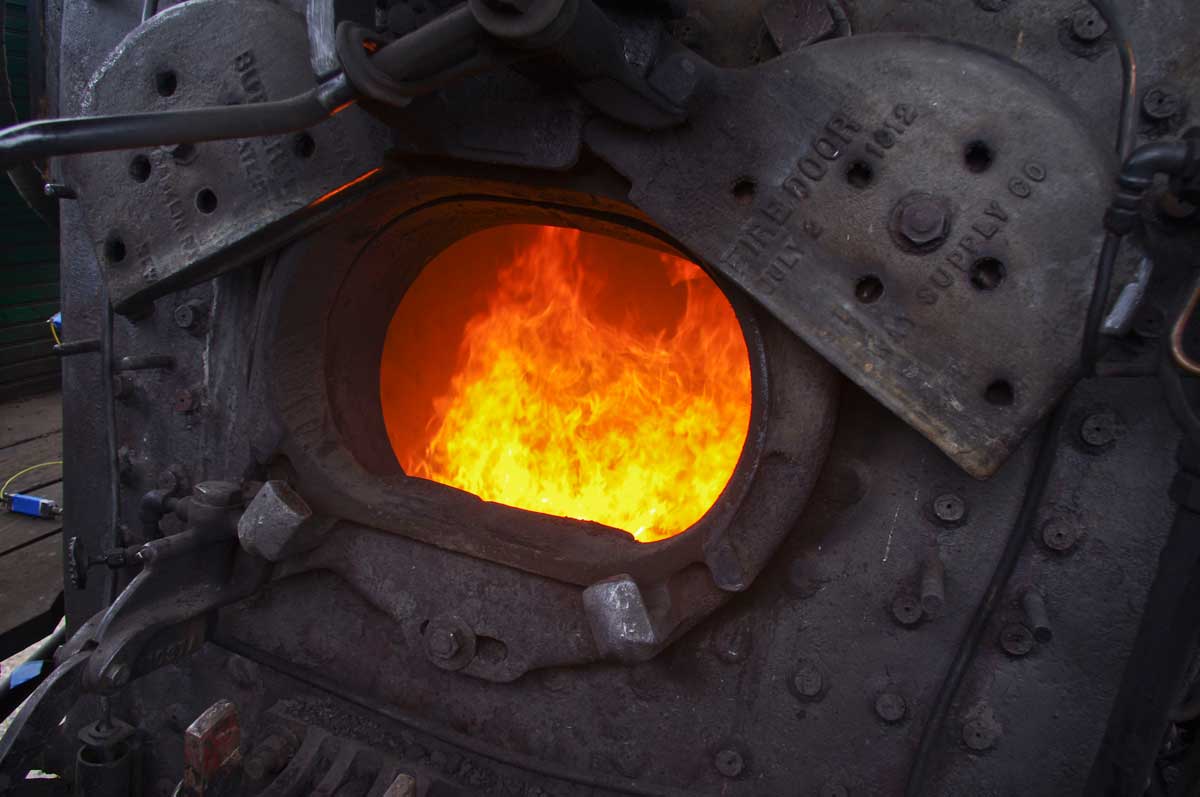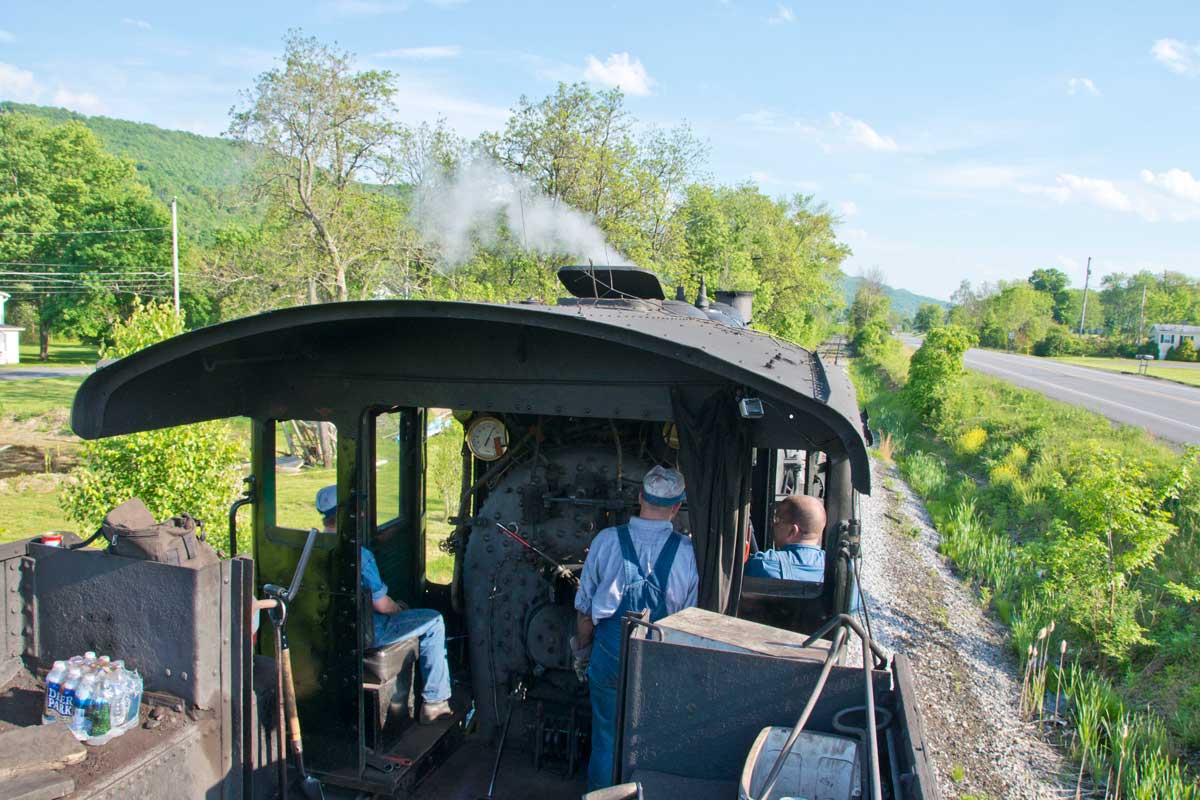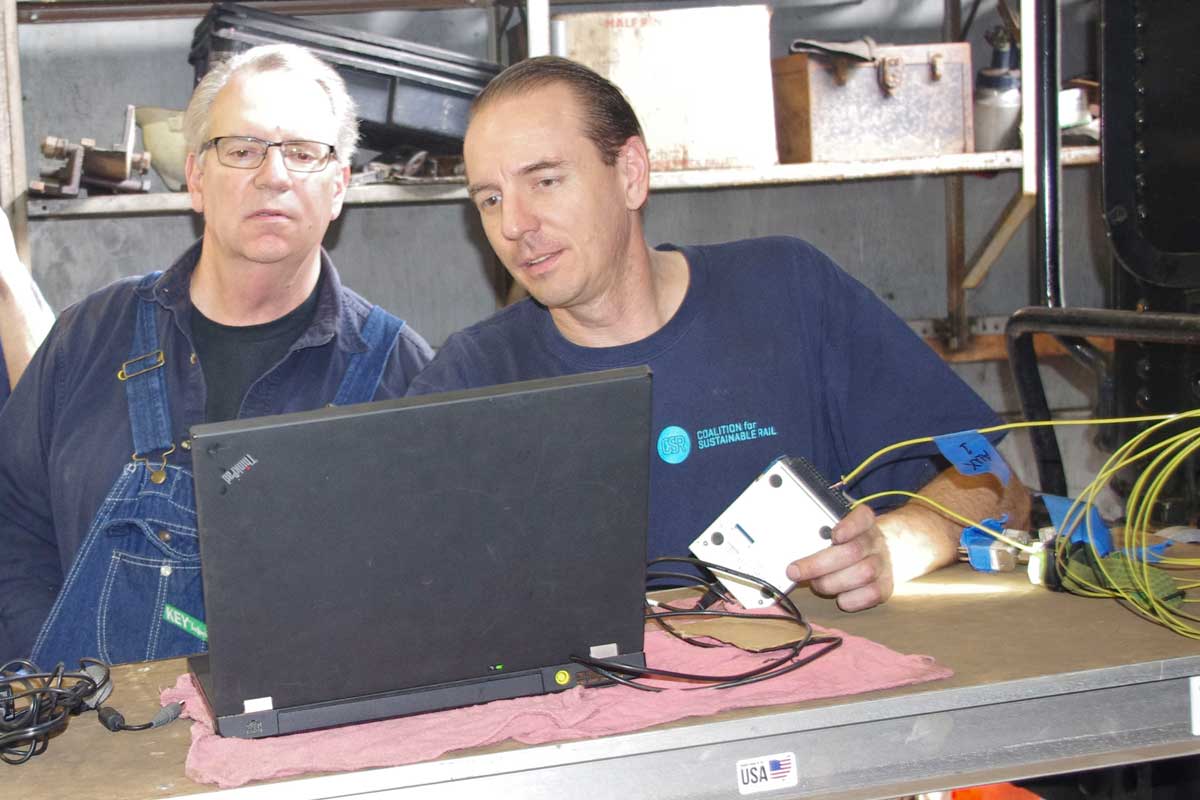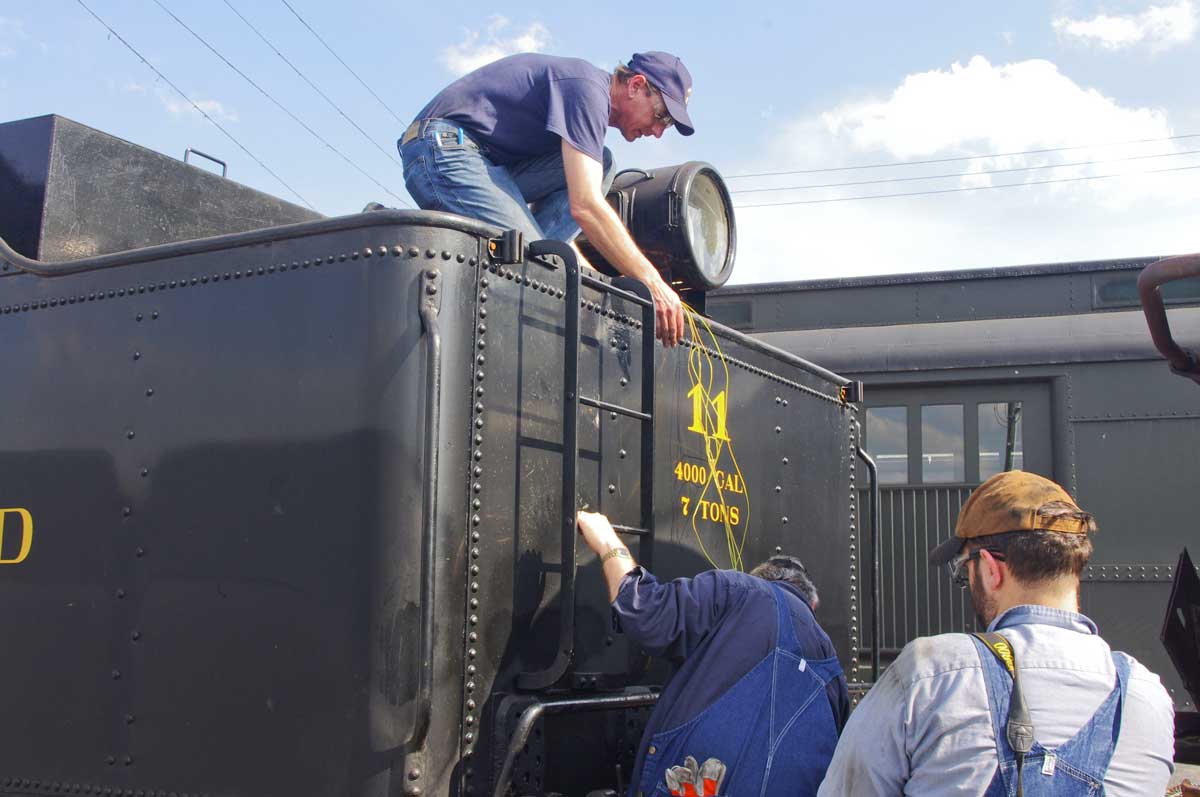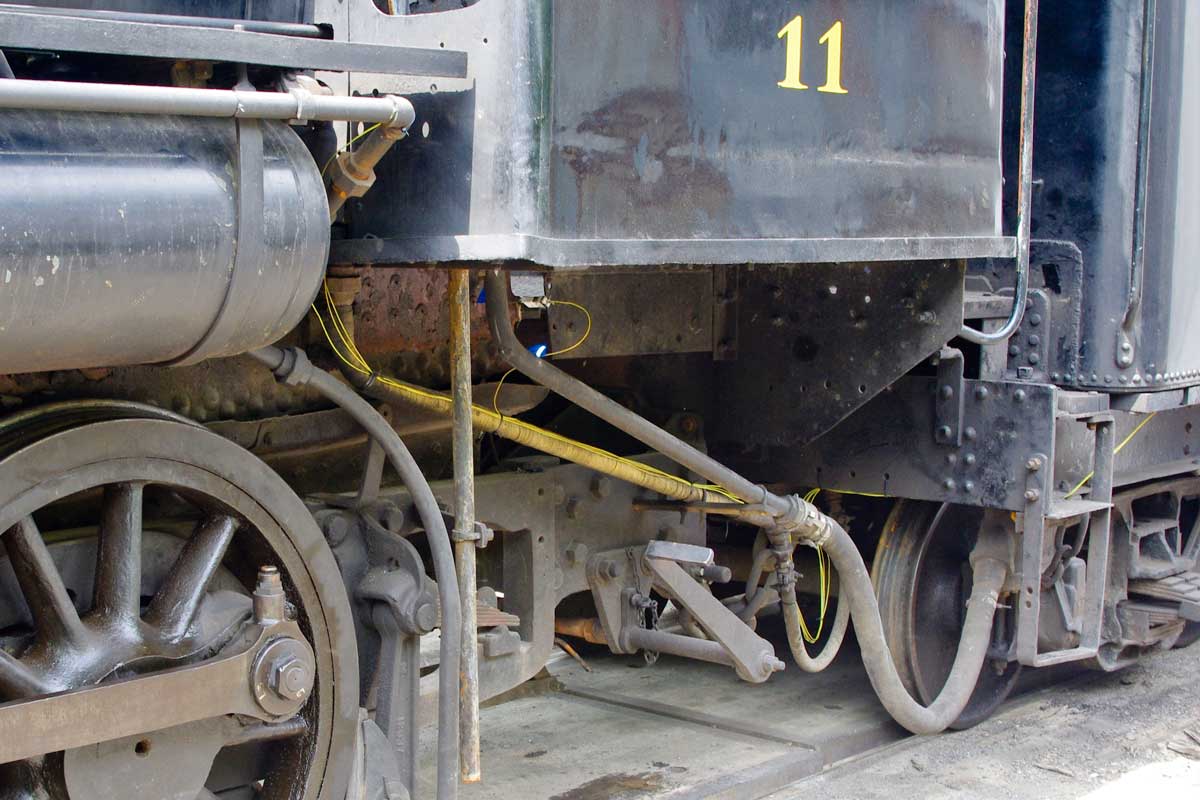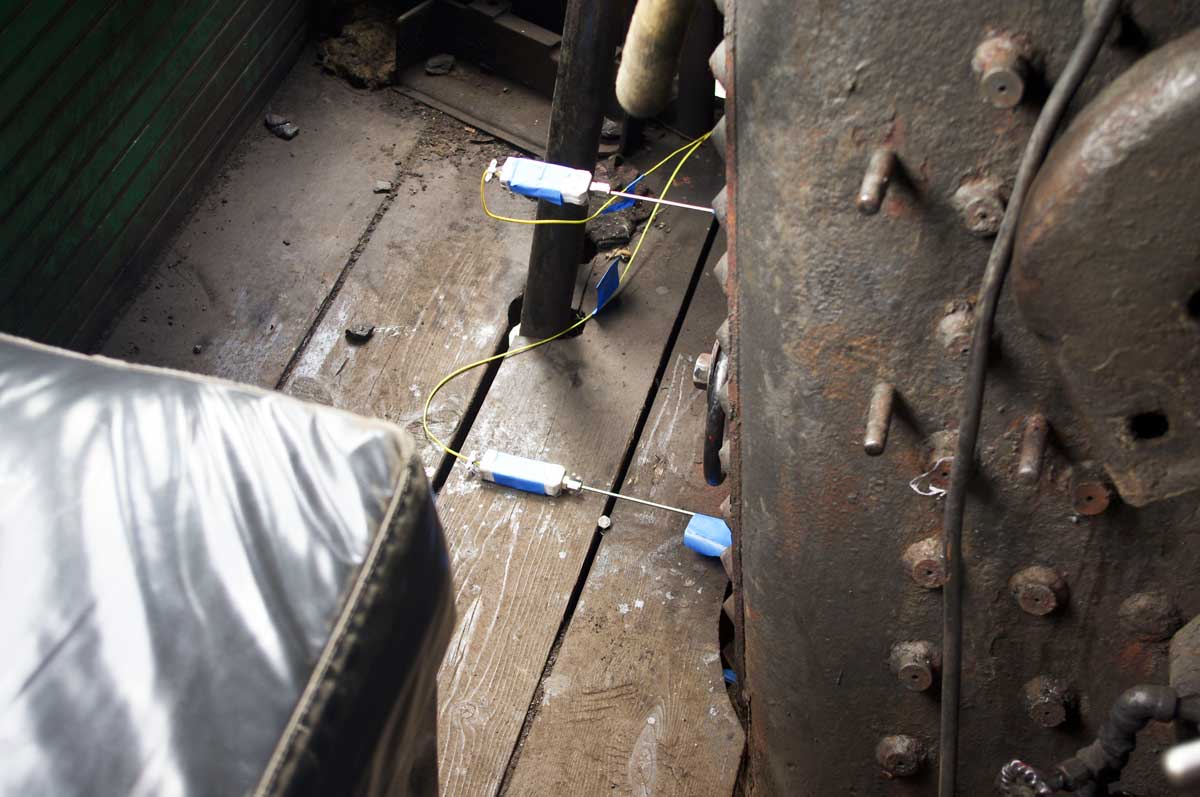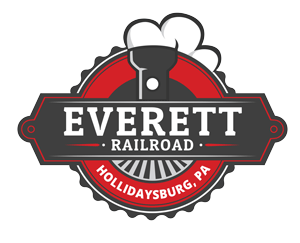The Coalition for Sustainable Rail (CSR), working in conjunction with the Natural Resources Research Institute of the University of Minnesota – Duluth (NRRI), have been making substantial progress in the development of sustainable solid fuels for use in boilers, including those of historic steam locomotives. The latest advancement in this multi-year project was the test of a wood-based biofuel known as “torrefied biomass” in a 1920-built steam locomotive at the Everett Railroad (EVRR) in Hollidaysburg, Penn., earlier this Summer.
“Our work with the Everett Railroad was the first set of trials using the torrefied biomass fuels in full-scale test trains,” explained CSR President Davidson Ward. “Thanks to the generosity of our donors and the railroad, we were able to work with NRRI to manufacture more than 4,000 pounds of the biofuel, ship it to Pennsylvania, and test it in the Everett’s 2-6-0 steam locomotive number 11.”
Coal and “biocoal” loaded in the tender of EVRR No. 11.
The research program has been a learning process, and the tests at EVRR the next step in a series of tests that began with the 15-inch gauge Milwaukee County Zoo train. Torrefied biomass research has focused on both the processes to manufacture the biofuel and the manner with which the fuel is densified into usable briquettes. The three sets of tests at the Zoo over a multi-year period beginning in 2016 were a means to test fuel and densification techniques, and the EVRR tests were a first step towards the fuel being used in full-scale locomotives.
“Our key focus with the tests in Pennsylvania was to gauge the ability of the biomass to make steam and to serve as a stand-in fuel for coal,” said Don Fosnacht, Ph.D., Associate Director of the Natural Resources Research Institute and CSR Board Member. “We tested fuel briquettes made of both 100% torrefied biomass and a 50/50 blend of torrefied biomass fuel and powder river basin coal, and we are generally pleased with the results of each type of fuel.”
The goal of the tests was to haul revenue trains with the torrefied biomass. However, initial test runs with the 100% torrefied fuel in EVRR No. 11 demonstrated that the fuel made plenty of heat and minimal smoke, but fines present in the fuel, combined with the hard-working exhaust of the locomotive under test conditions, resulted in ember emissions. As such, CSR and EVRR opted to take baseline coal test data during the normal day’s runs, and ran a special, one-car train after hours with the torrefied fuel to ensure that any potential stops would not impact paying customers.
Zach Hall firing torrefied biomass in No. 11.
“We found that the torrefied fuel burned with plenty of heat to keep up steam with minimal, if no, additional effort shoveling coal,” explained Zach Hall, Steam Foreman at the Everett Railroad. “The fuel does tend to burn quicker and hotter, resulting in a fire that tends to burn down faster than coal. That said, it was easy to keep up with steam demand and the fire, with “green” fuel lighting quickly and burning hot.”
The following morning, CSR recorded data on a 12 mile positioning move with No. 11, this time burning the pre-blended mix of 50/50 torrefied biomass and PRB coal. The fuel, which was manufactured by blending pulverized coal and biofuel into pre-mixed pellets, tended to burn slower than the 100% biofuel and with equally little smoke, but the lower energy content of the coal tended to require more frequent shoveling than with either the normal coal used by EVRR or the torrefied biomass.
Following the results of these tests, CSR is working with NRRI to test various binders to continue to refine the densification of the fuel. The ultimate pursuit is a biomass pellet that burns similarly to coal, but minimizes the smoke and net-carbon emissions associated with the fossil fuel. As the preservation industry continues to face difficulties procuring coal, CSR is dedicated to pursuing torrefied biomass as a means to preserve the art of “coal” firing.



